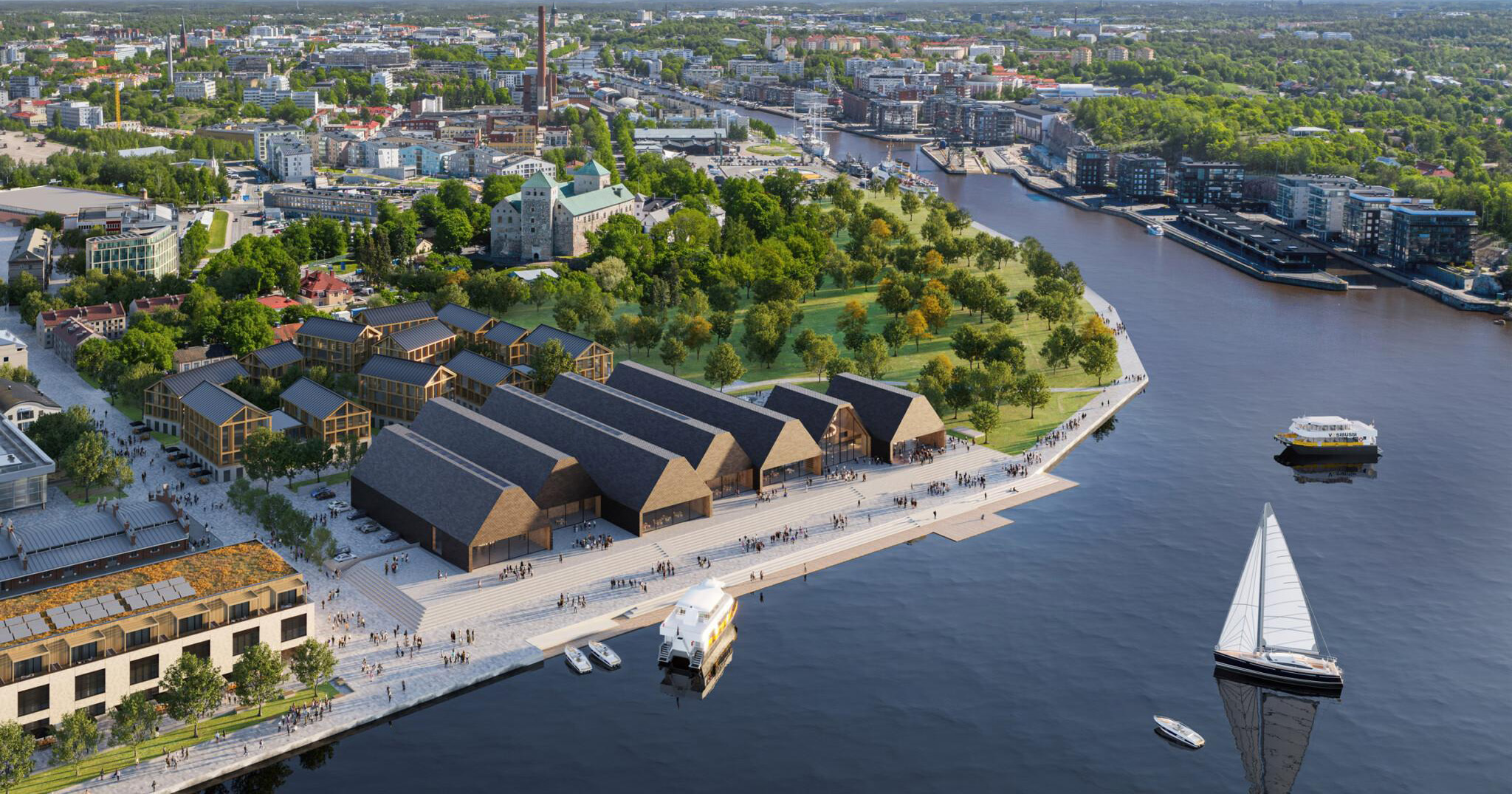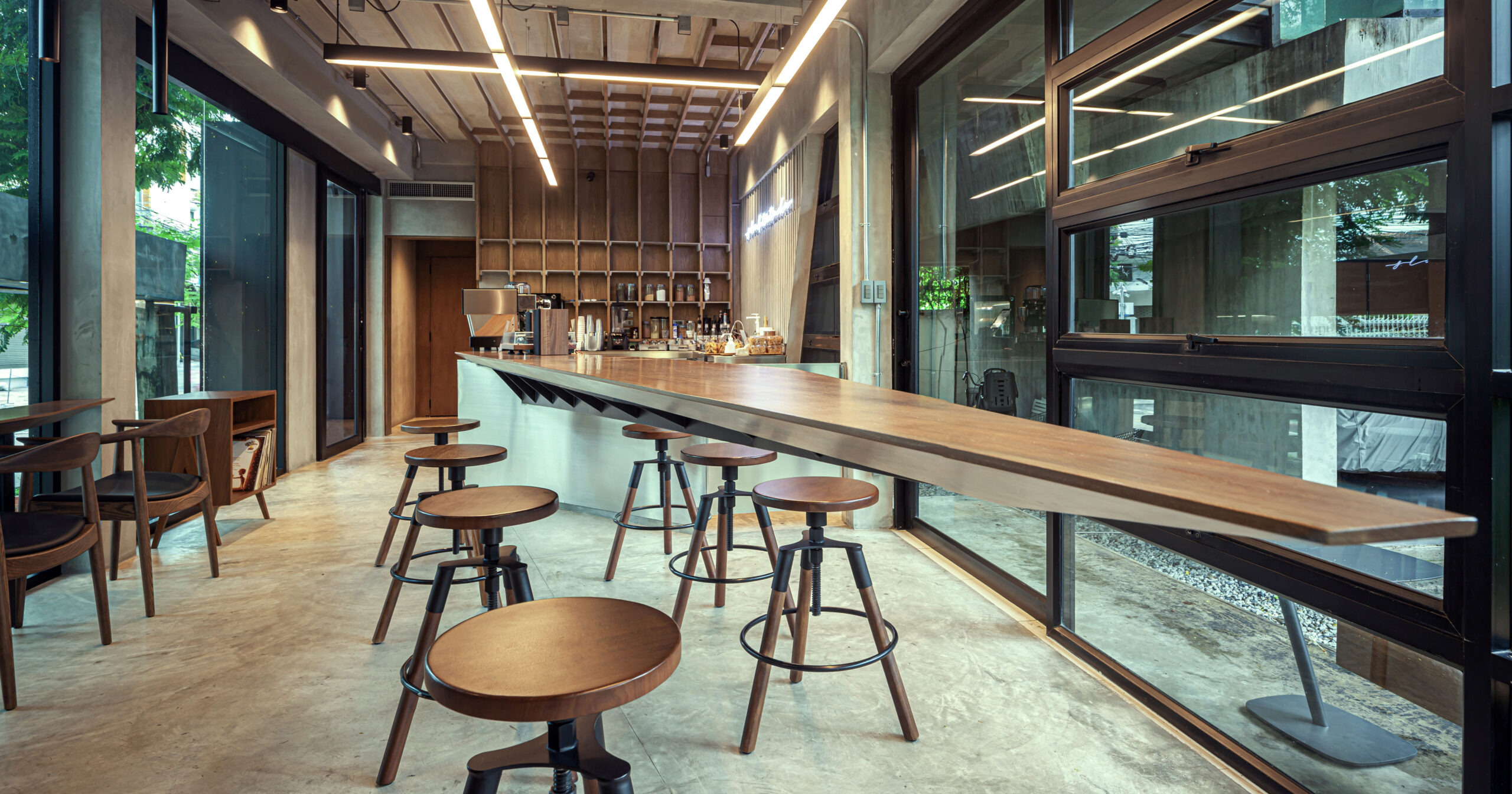Call for entries: The 14th Architizer A+Awards celebrates architecture's new era of craft. Apply for publication online and in print by submitting your projects before the Final Entry Deadline on January 30th!
“When we think of big cities, we think of fast life, people rushing around, nobody has time to get to know their neighbors. I don’t think we should see it like that; it hasn’t always been like that.”
To understand Minna Arve’s perspective on urban planning, you only need to spend five minutes with her in Turku’s market square. The redesign of this historic landmark, the centerpiece of Finland’s oldest city, was completed in 2021 — meaning that we’re now sipping coffee outside the al fresco Cafe Eino on a sunny early summer morning, and the only thing interrupting our conversation with the elected mayor is the locals saying hello to her as they pass by our table.
It’s a small but significant detail that reveals plenty about how this corner of Scandinavia is rethinking the relationship between town and people. Nowhere is this more evident than the riverfront, which is undergoing the kind of monumental transformation usually reserved for Alpha and Beta metropoles, rather than a city that, albeit growing, is still home to just 200,000 or so people. On the banks of the Aura, though, major works are underway in all directions.
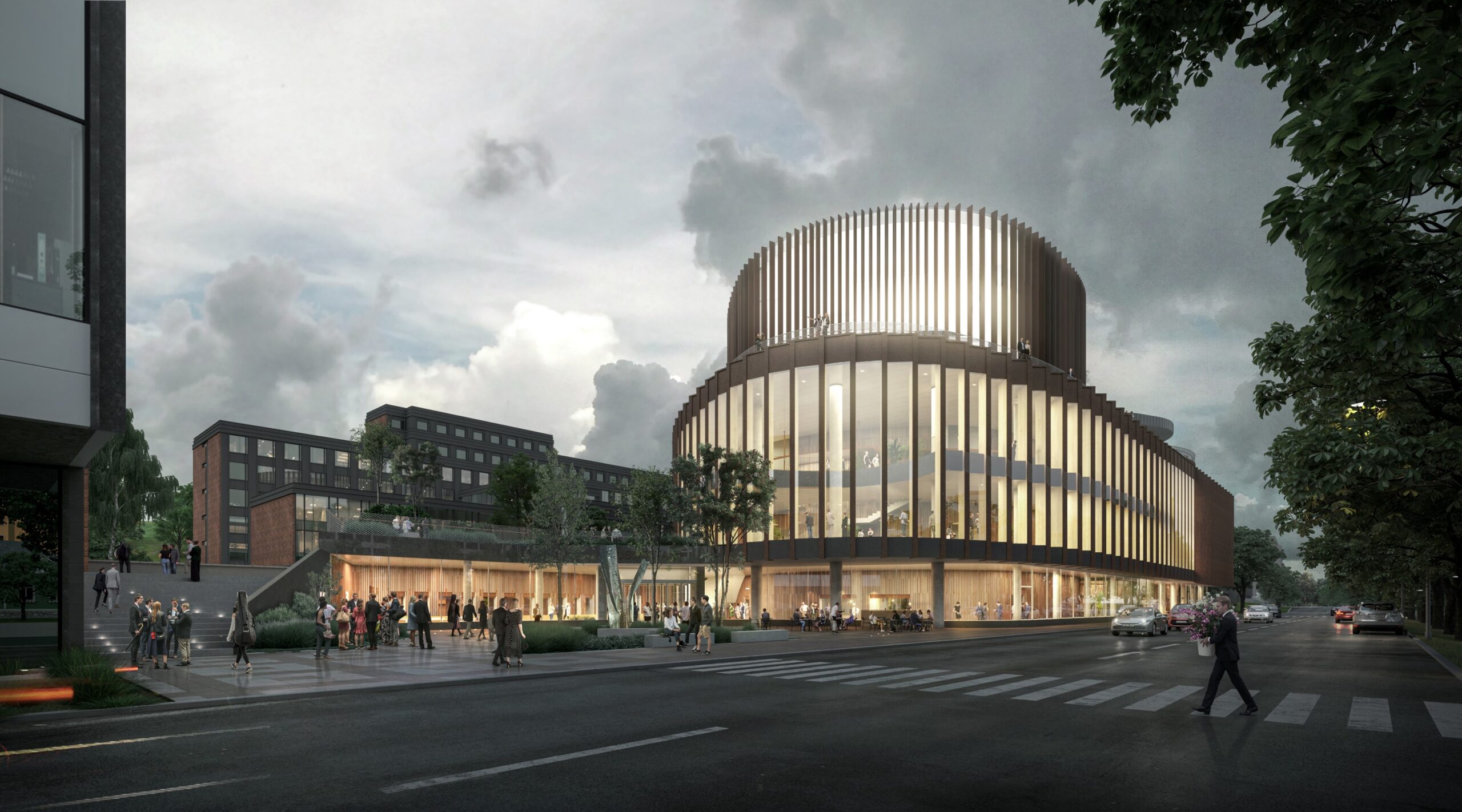
Artist rendition of Turku Music Hall Fuuga courtesy of PES Architects
PES-Architects’ Music Hall Fuuga is the most significant project currently in development, and expectations are high. A few minutes away, the older Turku Concert Hall continues to operate for now, the country’s first concert hall and a stunning example of mid-century Finnish modernism conceived by national architecture hero, Risto-Veikko Luukkonen.
While there was an option to renovate and regenerate, careful consideration revealed this would cost almost as much money, and still leave boxes unchecked. Not least accessibility, something Arve is clear must be prioritized when awarding new developments to master planners.
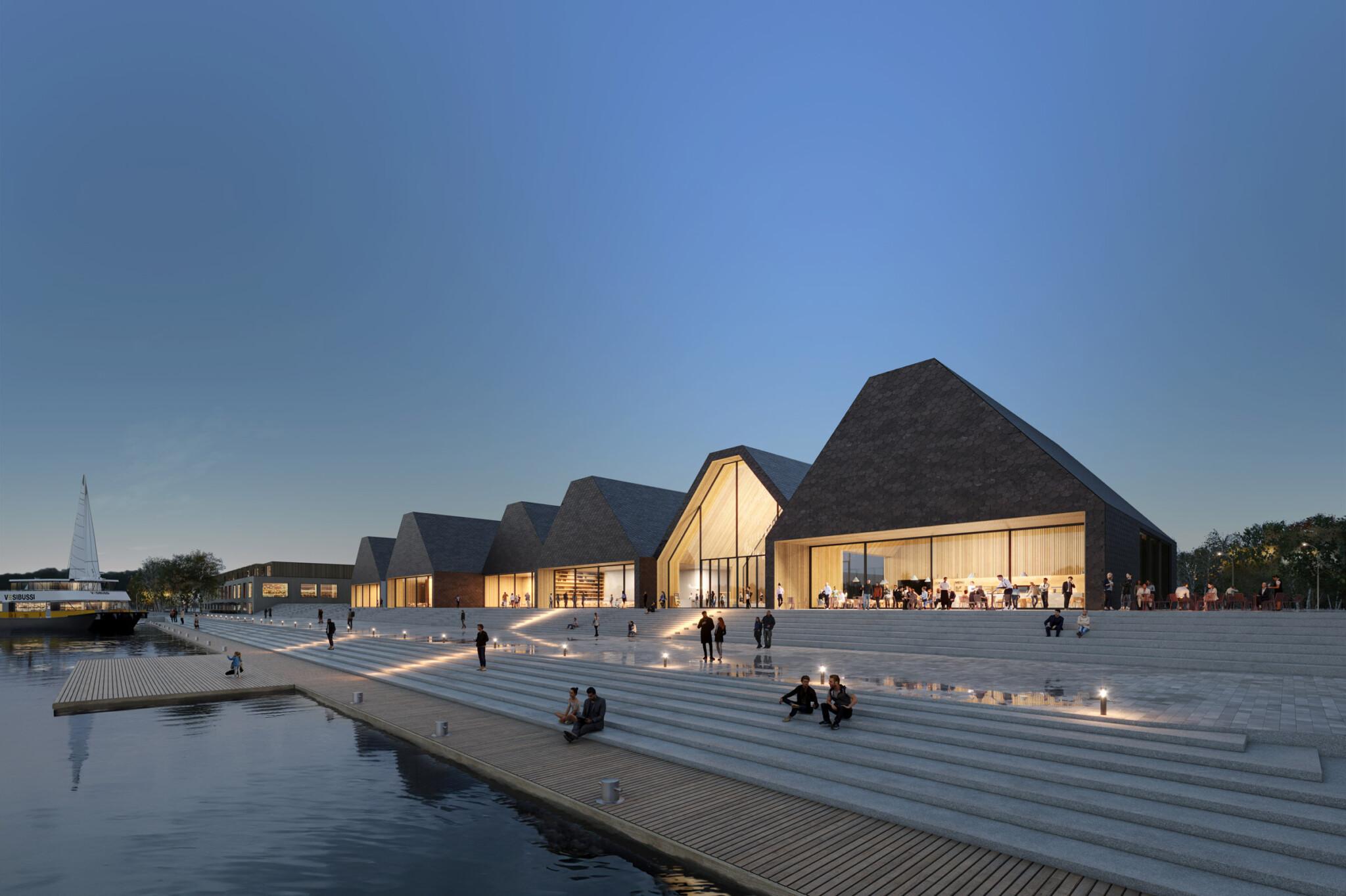
Public realm outside the forthcoming Museum of History and the Future (C) Sigge Architects
Further up the water, out towards the Baltic, there’s currently no sign of another groundbreaking moment in the city’s story which will contribute towards a new placemaking blueprint for a Cultural Riverfront. But here, at the ferry terminal, huge changes are about to take place. The port itself will be moved further out of town, a large new park will replace the tarmac area used to channel HGVs, coaches and cars onto vessels bound for Stockholm twice daily. An abhorrent use of an enviable location, alongside the planned green space will be a new cultural destination concept — the Museum of History & the Future.
The rather vague name takes some unpicking, but makes sense once you get there. The institution, due to open in 2029, will celebrate the heritage and history of Turku, and Finland as a whole. Exhibitions will look to progressive formats and cutting edge technology to immerse visitors, with the building itself reflecting this remit. Enter local firm Sigge Architects, who were awarded the commission based on their unique proposal, Squāma.
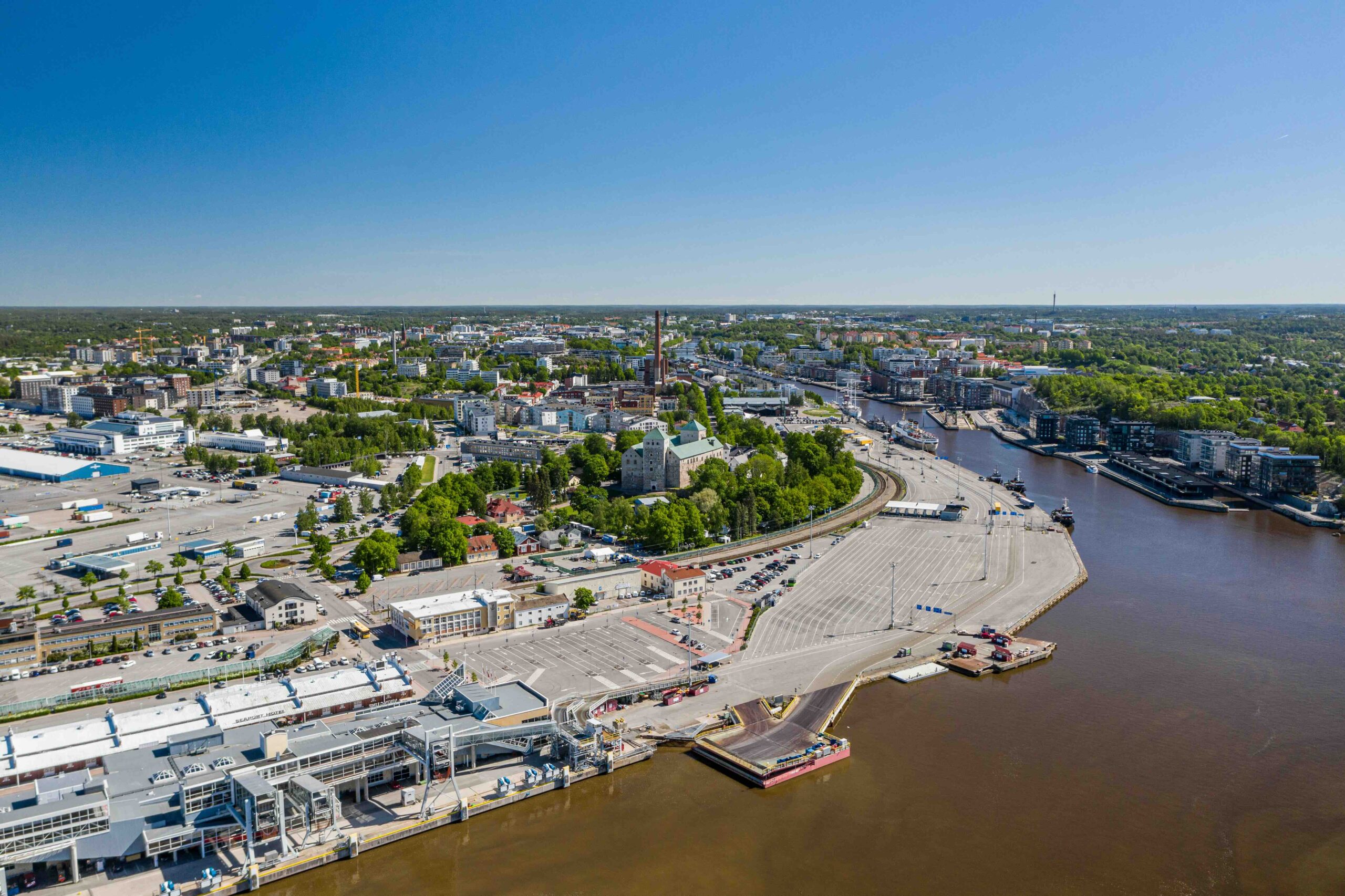
Location of the new Museum of History & the Future, currently part of Turku’s ferry port (C) Visit Turku
Using a ‘magazine’ approach, the design features a series of low rise, oblong structures which are autonomous yet interconnected. Constructed from dark timbers, mirroring traditional construction in the region, if all goes to plan the aesthetics should compliment the wonderfully preserved medieval castle which will cast a shadow over the site. We ask what a mayor looks for when casting their vote for a major architectural competition to create a new civic icon.
“For me, it was important to think about not how the museum will look, but how it will support the public space around it. How will it support encounters. I’ve been speaking a lot recently about the city of encounters… how we can make public space that supports people meeting each other,” Arve replies. “This was important with the new music hall, too. How will we create the building but also the public space around it. It comes down to making these investments accessible to people. You need to promise this, but also deliver the idea that this is for everyone to use.”
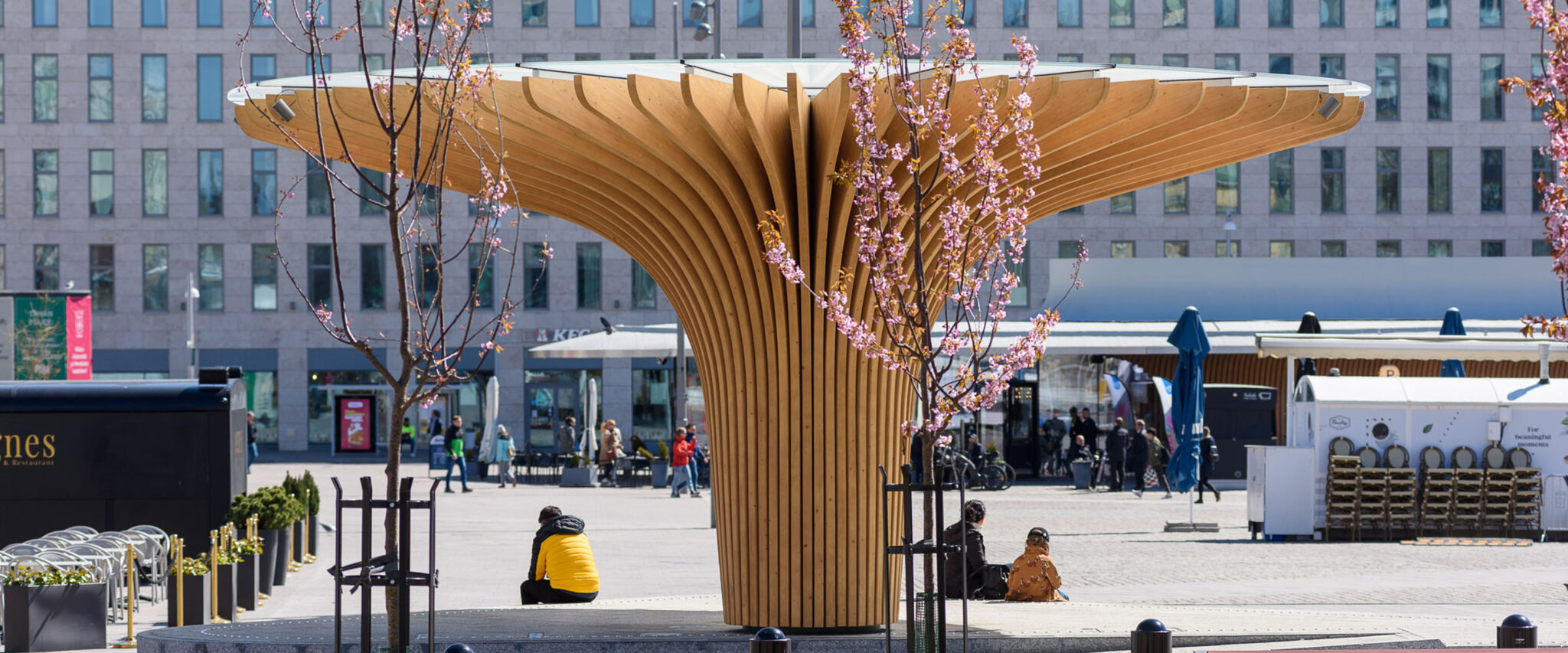
Street furniture in the redeveloped Turku Market Square (C) Sarc + Sigge
Arve talks about the programming of something like a concert hall, the need to diversify in a bid to improve inclusion. But she’s talking about much more than that. At a time when urbanization and immigration are putting pressure on public services and infrastructure in Finland, Turku ranking in the country’s fastest growing areas, the electorate must be convinced that spending hundreds of millions on cultural development is in their interest. Exclusivity should not apply.
“[At the Music Hall] you won’t even need to go and listen to music, just relax, enjoy the surroundings, go to the roof terrace. We need places that support these kinds of encounters. So in that sense, more important than the building is how it is reached by people,” Arve continues, before revealing architecture is a big passion of hers, and a belief in the power of great building design. “A skilful architect can work miracles.”
Call for entries: The 14th Architizer A+Awards celebrates architecture's new era of craft. Apply for publication online and in print by submitting your projects before the Final Entry Deadline on January 30th!
